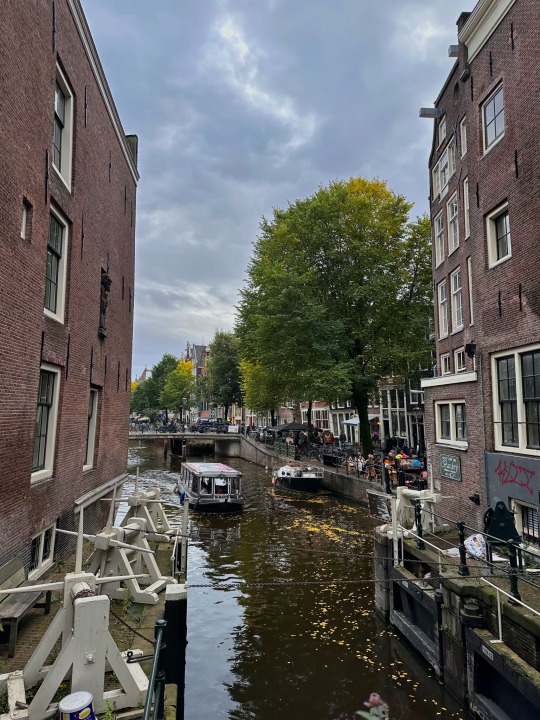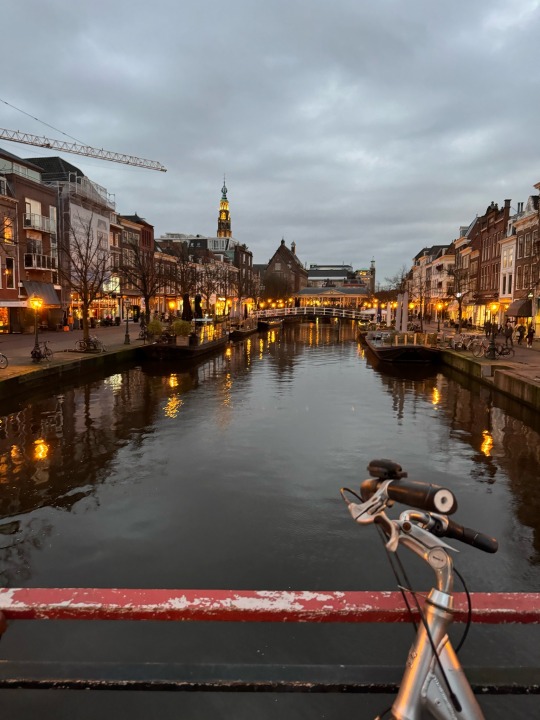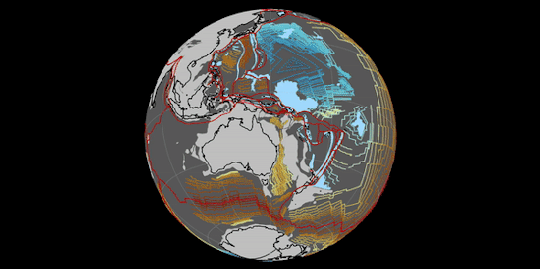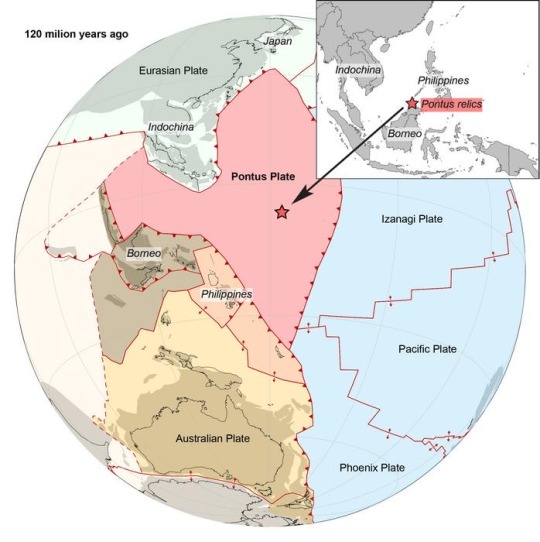#netherlands 🇳🇱
Text





Amsterdam, capital of the Netherlands, has more than 100 kilometers of grachten (canals), about 90 islands and 1,500 bridges. The three main canals (Herengracht, Prinsengracht and Keizersgracht), dug in the 17th century during the Dutch Golden Age, form concentric belts around the city, known as the Grachtengordel. Alongside the main canals are 1550 monumental buildings.The 17th-century canal ring area, including the Prinsengracht, Keizersgracht, Herengracht and Jordaan, were listed as UNESCO World Heritage Site in 2010,contributing to Amsterdam's fame as the "Venice of the North".
Canals of Amsterdam
Amsterdam, Netherlands 🇳🇱
#amsterdam#netherlands 🇳🇱#netherlands#riverbank#canals#building#arhitecture#photography#atmosphere#photoblog#beautiful photos#travel#europe#aesthetic#cozy autumn#autumn vibes#autumn#city photography#city life#cool#cozy aesthetic#iphone photography#photografy#photo edit#photo blog#naturecore#cottagecore#dark academia#artists on tumblr#fairycore
115 notes
·
View notes
Text

Put photo from Netherlands show.
#palaye royale#remington leith#remington palaye royale#remi#emerson barrett#emerson#fever dream era#fever dream#remmy#fever dream tour#mosh pit#Netherlands 🇳🇱
44 notes
·
View notes
Text

Basiliek van de H.H. Agatha en Barbara , Oudenbosch , Netherlands 🇳🇱
3 notes
·
View notes
Text






0 notes
Text
Scientists Discover Ghost of Ancient Mega-Plate That Disappeared 20 Million Years Ago
A Long-lost Tectonic Plate Dubbed “Pontus” that was a quarter of the size of the Pacific Ocean was discovered by chance by Scientists in Borneo
— By Stephanie Pappas | Live Science | October 17, 2023

Utrecht University Geologist Suzanna van de Lagemaat has reconstructed a massive and previously unknown tectonic plate that was once one-quarter the size of the Pacific Ocean. Credit: Suzanna van de Lagemaat/Utrecht University, Netherlands
A long-lost tectonic plate that once underpinned what is today the South China Sea has been rediscovered 20 million years after disappearing.
The plate is known only from a few rock fragments from the mountains of Borneo and the ghostly remnants of its huge slab detected deep in Earth's mantle. It was once a quarter of the size of the Pacific Ocean. Scientists have dubbed it the "Pontus plate" because at the time of its existence, it sat under an ocean known as the Pontus Ocean.
"It's surprising to find remnants of a plate that we just didn't know about at all," Suzanna van de Lagemaat, a doctoral candidate at Utrecht University in the Netherlands, told Live Science.
Van de Lagemaat and her colleagues were initially studying the Pacific plate under the Pacific Ocean. Tectonic plates constantly move against one another, and the crust in oceanic plates is more dense than continental plates, so oceanic plates get pushed under continental plates in a process called subduction and disappear. Sometimes, however, rocks from a lost plate get incorporated into mountain-building events. These remnants can point to the location and formation of ancient plates.
The researchers were attempting to find remnants of one of these ancient lost plates, known as the Phoenix plate, while doing fieldwork in Borneo. Scientists can look at the magnetic properties of rocks to learn when and where they formed, van de Lagemaat said; the magnetic field that surrounds Earth gets "locked in" to rocks when they form, and that magnetic field varies by latitude.
But the researchers found something strange when they analyzed the rock they'd collected in Borneo.
"This latitude didn't fit with the latitude we got from the other plates that we already knew about," van de Lagemaat said.
To unravel the mystery, she used computer models to investigate the region's geology over the last 160 million years. The plate reconstruction showed a hiccup between what is now South China and Borneo — an ocean once thought to be underpinned by another ancient plate called the Izanagi plate actually wasn't on that plate. Instead, the Borneo rocks fitted into that mystery gap.

A reconstruction of the Pontus oceanic plate shown in the paleo-Pacific ocean 120 million years ago, along with its present relicts. Credit: Suzanna van de Lagemaat, Utrecht University
The researchers discovered the spot was actually occupied by a never-before-known plate, which van de Lagemaat and her team named the Pontus plate.
The reconstruction, published Sept. 29 in the journal Gondwana Research, shows that the Pontus plate formed at least 160 million years ago but was probably far older. (The rock samples collected in Borneo date back 135 million years.) It was once enormous but shrank steadily over its lifespan, finally getting pushed under the Australian plate to the south and China to the north, disappearing 20 million years ago.
Decade-old research from the same lab also showed a hint of the Pontus plate. That research looked at imaging of Earth's middle layer, the mantle, where the subducted crust ends up. It showed a huge slab of crust of unknown origin, but scientists at the time had no way to determine where it came from, van de Lagemaat said. Now, it's clear that this crust is what's left of the Pontus plate.
— Borneo, a giant, rugged island in Southeast Asia’s Malay Archipelago, is shared by the Malaysian states of Sabah and Sarawak, Indonesian Kalimantan and the tiny nation of Brunei. It’s known for its beaches and ancient, biodiverse rainforest, home to wildlife including orangutans and clouded leopards. In Sabah is 4,095m-tall Mount Kinabalu, the island’s highest peak, and, offshore, the famed dive site Sipadan Island.
#Live Science#Scientists#Ancient Mega-Plate#Tectonic#Pacific Ocean#Suzanna van de Lagemaat | Geologist | Utrecht University#Netherlands 🇳🇱#South China 🇨🇳 Sea 🌊#Borneo
1 note
·
View note
Text
🇬🇧Here a small flashback to last December, when I had the honour to represent the delegation of Luxembourg at the Western Model European Parliament.
0 notes
Text

He's just too freaking cute for me I think im in love again 😍❤️🇳🇱
#cody gakpo#my boy deserves the world#god loves you#liverpoolfc#liverpool fc#lfcfamily#lfcfans#beautiful#ugh hes so cute#ugh my heart#i'm in love 😍😍😍#gorgeous 😍😍😍#my bae for life 😍😍#netherlands 🇳🇱#my heart ❤️#i’m so 🥰🥰🥰#fooball#premier league#my sweet boy#ugh he's so pretty#pretty boy#lfc#ynwa#my heart#music#summertime#ugh i love him#hes mine#so hot 🔥🔥🔥#love him
1 note
·
View note
Text
orange🍊

オラニエ=ナッサウ家
0 notes
Text

Driver Career Season 3 - Scuderia Ferrari #85 - (13/16) - Netherlands 🇳🇱 - P14
0 notes
Text









The palace was built as a city hall during the Dutch Golden Age in the 17th century. The building became the royal palace of King Louis Napoleon and later of the Dutch Royal House.
The palace is used by the monarch for entertaining and official functions during state visits and other official receptions, such as New Year receptions.
The three floors are crowned by a dome with a weathervane in the shape of a ship. It is decorated with marble inside. Astride the rear of the building is a 6-metre-tall statue of Atlas carrying the Globe on his shoulders.
The Royal Palace houses one of the most complete collections of furniture and decorative and applied arts in the world, well preserved in the Empire style (about 2000 items).
Royal Palace of Amsterdam
Amsterdam, Netherlands 🇳🇱
#royal palace#amsterdam#netherlands#🇳🇱#netherlands 🇳🇱#places#royalty#interiors#marble statue#arhitecture#travel#museum#furniture#art style#iphone photography#beautiful photos#city#history#good vibes#atmosphere#dark academia#vibes#photo#photography#photoblog#rich#prestige#europe
37 notes
·
View notes
Text
The Netherlands (Holland) 🇳🇱
When the Euro was being designed, they intentionally placed illustrations of fictitious, non-existent bridges upon each paper note, as to not show priority toward one nation or another.
Or at least, they were fictitious... until the Netherlands decided to build all of them...





#Netherlands#Western Europe#Europe#eu#euro#European union#🇳🇱#fun facts#funny facts#random facts#nederlands#nederlandse mense eks eintlik ‘n beitjie trots like dis fokken snaaks
58 notes
·
View notes
Text
734 notes
·
View notes
Text
My government is on a roll lately. More = better 👏🏻



51 notes
·
View notes
Text
0 notes
Text
Can Wind Turbines Make You Sick?
The United States ranks first in the world for electricity generated from wind, according to the Department of Energy. But for some, the shifting winds of the renewable energy revolution isn’t a pleasant one.
— By Kelsey Tsipis | Published: Wednesday June 27, 2018 | NOVA — PBS

Twenty-five peer-reviewed studies have found that living near wind turbines does not pose a risk on human health. Photo Credit: Daniel Brock/Flickr
The amount of wind power generated in America has nearly doubled in recent years. Today, the United States ranks first in the world for electricity generated from wind, according to the Department of Energy . But for some, the shifting winds of the renewable energy revolution isn’t a pleasant one.
In places like Massachusetts, New York, and Vermont where industrial wind turbine projects have recently been introduced, residents have reported symptoms such as nausea, sleep disorders, fatigue, and increased stress that they account to a low-frequency hum—a combination of audible bass sounds and inaudible vibrations—generated by the turbines. In one instance , an air traffic controller attributed a near-fatal mistake on the insomnia and stress he experienced after a wind turbine was installed near his home in Falmouth, Massachusetts.
As public support for renewable energy technologies like wind gains traction, some local communities are putting their foot down, arguing that these efforts shouldn’t come at the expense of their health. But whether the sound, audible or inaudible, actually impacts human health remains a deeply contested issue.
Scientific consensus suggests it does not. Twenty-five peer-reviewed studies have found that living near wind turbines does not pose a risk on human health. The studies looked at a range of health effects from hearing loss, nausea, and sleep disorders to dizziness, blood pressure, tinnitus, and more. Recently, a new study using retrospective data reported that stress, as measured by hair cortisol levels, was not associated with proximity to wind turbines.
The study, published in the June issue of The Journal of the Acoustical Society of America , found no direct link between residents’ distance from wind turbines in Ontario and Prince Edward Island and sleep disturbances, blood pressure, or stress. The stress levels were both self-reported and measured via hair cortisol levels, a hormone secreted under stress that prepares the body for its fight-or-flight response.
“It’s not that we don’t believe that people aren’t feeling well or aren’t sleeping well,” said Sandra Sulsky, one of the study’s co-authors and an epidemiologist at Ramboll, an international engineering consultancy company. “What we don’t know is how that is related to presence or absence of a wind turbine.”
The study used publically available data from a 2013 public health survey commissioned by the Canadian government, called the Community Noise and Health Survey, which is the only large-scale study on both subjective (self-reported symptoms) and objective (cortisol levels, blood pressure, heart rate, sleep monitoring) health outcomes in relation to living near wind turbines. Both the original 2013 study and new retrospective analysis found that wind turbine noise and proximity, respectively, were not associated with any adverse outcomes except for annoyance.
However, the results of the two studies deviated in one interesting way. The recent analysis found that the closer the respondents lived to wind turbines the lower they ranked the quality of life of their environment. The original study found no link between sound levels and these quality of life ratings. Though because there is no baseline data for the sample, Sulsky said, it’s difficult to distinguish whether respondents were dissatisfied before the wind turbines were installed.
“But it does suggest that there’s something other than sound itself that influences those perceptions,” Sulsky said.
With no proven biological basis for the reported symptoms, some have pointed to the “nocebo effect” as the cause of the complaints. The nocebo effect is akin to the placebo effect, where an individual’s positive perception towards a drug or treatment produces positive results, except in the nocebo effect, it’s negative attitudes and negative results.
The idea that a nocebo effect may be driving people’s reported problems is backed up by a 2014 study that pointed out that health complaints are more common in areas with the most negative publicity about the alleged harmful effects of turbines. A large-scale population survey in the Netherlands found that reports of stress and sleep disturbance were more common in areas where the turbines were visible.
For those living in the shadows of the wind turbines, there is little debate that the turbines have damaged their previously bucolic way of life. Annette Smith, the head of the group Vermonters for a Clean Environment and a long-time critic of industrial wind projects, said the projects have “destroyed the community.”
“If you just talk to people who live around these things, there’s no question that people are getting sick,” Smith said.
Through the grassroots organization she heads, Smith has helped organize public hearings for residents who report serious illnesses as well as lost hobbies such as gardening due to infrasound vibrations. In one case, a resident named Luann Therrien, who lives less than a mile from a 400-foot turbine, said she initially supported the wind projects.
“We were not against the turbines before they went in [but after] we were dizzy, had vertigo like you wouldn’t believe,” she said at one hearing .
One theory from residents as to why these effects don’t show up in the studies is that the Vermont mountains funnel the sound in a way that the flatlands of the Midwest do not. Others say some people may just be more susceptible than others to the inaudible noise, like sea sickness.
In response to these lobbying efforts, Smith said the utility companies have shown no willingness to talk about tangible solutions, such as real-time monitoring of noise, like what happens at airports. “They just deny it happens,” she said.
Apart from noise, Smith has what she calls “a menu” of other issues with industrial wind projects in residential areas. She cites the environmental effects of building roads and blasting ridge lines, changes to the topography of the land, and changes in wildlife populations. Smith, who lives “off the grid” with solar panels and the occasional diesel generator supplying her electricity, questions whether a commitment to this carbon-free source of electricity comes at too large of an expense to the rural communities that house them.
“We’re all expected to solve the energy issues of the world if we don’t want wind,” Smith said. “And I think that there are many other ways of developing and getting energy that people aren’t sacrificed or getting sick or leaving their homes… or being ridiculed.”
As to whether complaints from nearby residents will put a halt to wind power’s expanse in the U.S., recent data suggest they will not. From 2011 to 2016 electricity generated from wind turbines rose from 120 million to 226 million megawatt hours in the United States—a rise that also has not produced an increase in evidence of adverse health outcomes.
“It’s natural to look for causes, and something that seems to be new in the environment is a natural conclusion to draw,” Sulsky said. “But so far the evidence doesn’t support a causal association.”
— July 26th, 2023
#Wind 💨 Turbines#United States 🇺🇸#Electricity#Department of Energy#Renewable Energy#Kelsey Tsipis#Human Health#Massachusetts | New York | Vermont#Scientists#Acoustical Society of America#Sandra Sulsky#Epidemiologist#Canada 🇨🇦#Community Noise and Health Survey#Cortisol Levels Blood Pressure Heart Rate Sleep Monitoring#Nocebo Effect#Netherlands 🇳🇱#Vermont Mountains ⛰️#NOVA#PBS
0 notes




